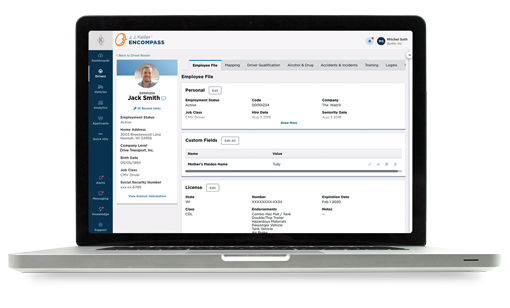Sr. Transportation Management Editor — J. J. Keller & Associates, Inc.
Building Success: The Foundation for Corrective Action Training Programs
Learn how to improve your company's safety metrics, better retain drivers, and reduce the chance of an accident with corrective action training.
Published On: 03/22/2023


Written by:
Mark Schedler
When Corrective Action Training (CAT) is partnered with dash cam technology, you can avoid two critical risks that threaten your fleet: unnecessary driver turnover and being proven negligent. But to find success and eliminate obstacles, it's vital to lay a good foundation, which requires collaboration and cooperation within your organization.
The goal of CAT is to improve the company's safety metrics, better retain drivers, and reduce the chance of an accident and post-accident litigation. If that sounds like the job of more than the safety department, you would be right. But the payoff of laying a proper foundation for CAT is significant:
- Improved driver behavior
- Increased driver retention
- Better CSA scores
- Lower insurance rates or smaller increases
- Reduced chance of being involved in a nuclear verdict
- Improved ability to secure more business
Let’s dig into the foundation for CAT success.
Leadership Support
Company leaders demonstrate their concern for driver safety and company compliance by actively supporting policies and best practices that help drivers get home safely, including embracing dash cam technology. A positive safety culture is reinforced and enhanced when leadership reinforces expectations of "desirable" behaviors, coupled with an open-door policy that allows employees to express their concerns. This empowers corrective action training as a proactive risk-mitigating technique.
Policies & Procedures
Organizations must reinforce safety as a value and a priority through clear policies and procedures that define acceptable, safe behaviors and unacceptable, unsafe behaviors and the associated consequences. Exceptions to safety policies for alleged “high performers” should not be allowed. Once policies and procedures have been created and communicated, drivers and office employees will understand performance boundaries and respond to corrective action training and coaching.
Exceeding Minimum FMCSA Compliance
Meeting FMCSA regulatory minimums is akin to getting C's in school. While it may keep you in a Satisfactory rating with the DOT, it's exactly what a trial attorney wants to see if he is suing your driver and company after an accident. To reduce the risk of triggering a nuclear verdict, focus on exceeding the regulations with best practices in these three key areas:
- Driver qualification
- Drug & alcohol testing
- Driver supervision related to hours of service
Download the FREE whitepaper, Corrective Action Training: Five Steps to a Best-in-Class Safety Program, for specific guidance.
Proactive Monitoring
To successfully implement and administer a corrective action training program, you need a proactive monitoring program that identifies drivers for coaching and training. Corrective action based on monthly CSA scores and citations, DOT accidents, and insurance loss-run incidents is reactive. The most successful carriers use dash cams and other telematics data to find and fix compliance and performance issues before crashes, citations, and unnecessary turnover.
NOTE: The proactive correction, or ”meaningful“ action as FMCSA refers to it in the Safety Management Cycle, can minimize the impact of litigation by helping carriers uphold their "duty to act" — a primary consideration for a jury. A ”duty to act“ means that you should have corrected the problem if you should have been aware of a safety issue. You must fix problems like running over hours, log falsification, harsh braking, unintended lane departures, distracted driving, or following too close, regardless of your choice to review the data.
Recordkeeping Policy
You do not want to keep corrective action documentation beyond the retention policy. For example, if you put a driver on a 90-day or one-year action plan and the driver has avoided the behavior, follow your company document retention and corrective action policies. If your policy states, "keep everything for the length of employment," consistently adhere to that. However, never destroy or try to conceal any related information once a significant accident has occurred. You could easily be found to have engaged in "spoliation" or destruction of evidence.
The Payoff
In many cases, CAT not only corrects unsafe behaviors but also transforms an employee into a more productive and loyal driver and can improve retention. Training demonstrates to employees that the company is committed to seeing them succeed and improve. Additionally, CAT delivered in response to dash cam events can reduce operational costs. For example, CAT training delivered in response to hard braking incidents can reduce brake and tire repairs and maintenance, as well as other safety-related and operational costs. It also minimizes potential liability and litigation if a crash occurs.
If you haven't considered implementing a Corrective Action Training Program or using dash cameras to improve training ROI, talk with a J. J. Keller Compliance Specialist. They can help you determine your most significant area(s) of risk and recommend an approach that will help you protect your fleet and drivers. Call 855-693-5338 to learn more.
You may also enjoy the following articles:
Sign up for our newsletter!
We'll help you stay on top of regulations, best practices, and fleet industry news. Sign up to receive a monthly email notification with links to our most recent blog articles, free resources, and event invites.
